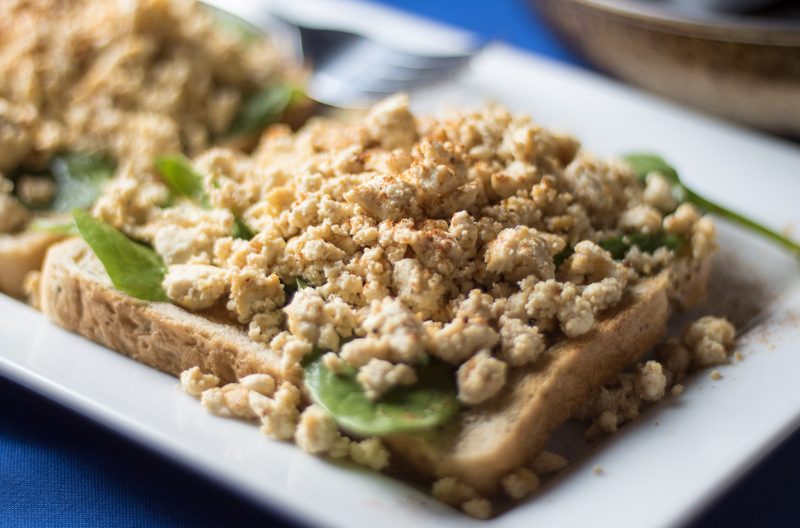Trend alert! Wondering why whole food, plant-based diet recipes are soaring in popularity right now? There’s a good reason. These meals are part of a sustainable plant-based diet. But what exactly does that mean? While you may have heard the term before, understanding what the lifestyle entails could be a little trickier. So, let’s start off with a simple definition.
What is a Plant-Based Diet?
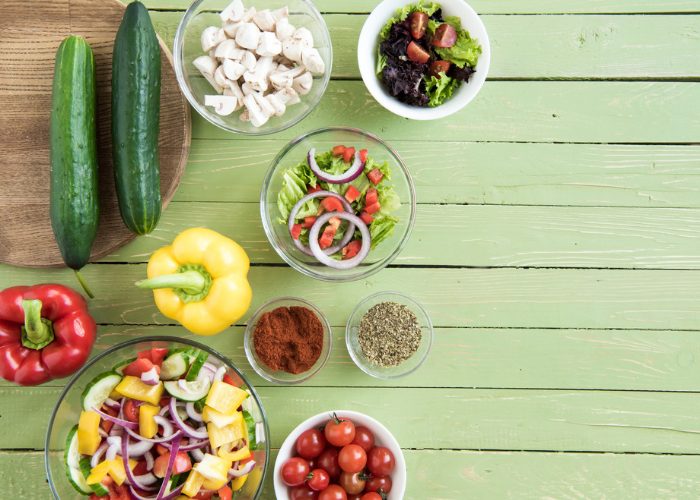
A plant-based diet is one that primarily focuses on plant-based foods, and healthy alternatives to meat-based foods. Thanks to the high level of greenery eaten in this diet, it’s packed with fiber and, of course, vitamins.
Much like a vegan diet, people following this type of nutrition plan avoid ingredients such as meat, fish, eggs, and dairy. These dietary staples are replaced by alternatives such as legumes, fruit, vegetables, and other plants. That being said, eating limited amounts of fish, poultry, and dairy is allowed, but should be kept to a minimum, and eventually swapped out for plant-based alternatives.
This diet trend is certainly growing. Between 2014 and 2017, the number of people eating a vegan diet or plant-based diet rose by a massive 600%, according to Report Buyer statistics.[1] There are a number of reasons for the sudden shift in people’s general eating habits. We have a greater access to education than ever before, which means that many are discovering the widely inspiring benefits of a plant-based diet.
Positive environment impact
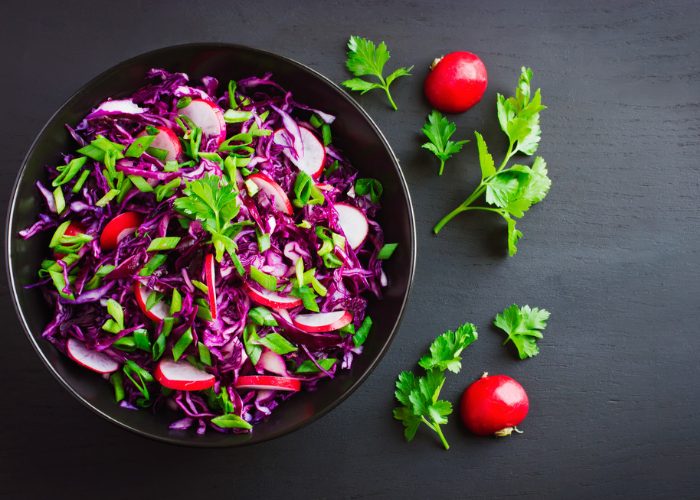
For one thing, there’s the positive environmental impact that this choice has. Research published in the Nature journal suggests that the population’s move toward a plant-based diet could lower global emissions and save the habitats of many endangered species.[2] For example, when you look at the emissions per gram of meats vs legumes, you will find that animal-based products are 250 times more harmful to the environment.
Astounding health benefits
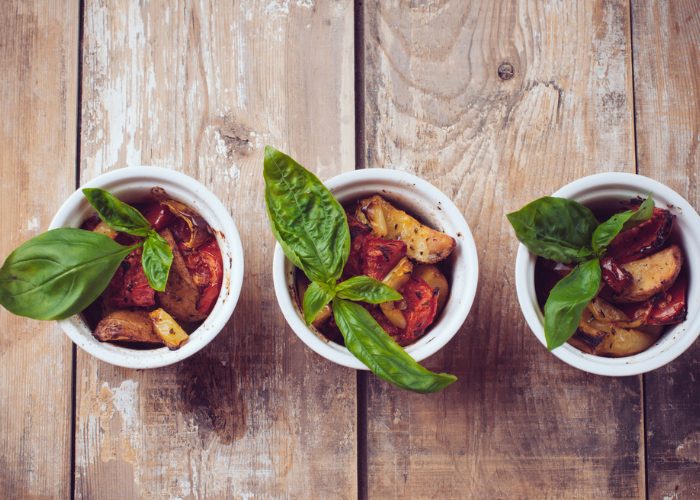
The traditional Western diet is certainly a meat heavy one. However, this eating style has been linked to numerous health problems, in the long term. For example, one study found that most meat, high-protein diets could be associated with heart failure in older women, according to the American Heart Association.[3]
Concerning pieces of research, such as this one, are one of the main reasons that so many people have turned away from a meat-heavy eating plan to a plant-based diet instead. Of course, there is also a body of research to suggest that eating more plants on a daily basis could be what it takes to start reaping a myriad of health rewards.
What are the Benefits?
Before we take a moment to look at some of the most temptingly delicious plant-based diet recipes, it’s worth understanding more about this particular style of eating. So, with that in mind, let’s take a quick look at some of the health-related benefits of this eating plan.
While they are relatively new to the mainstream diet, there has been some research into their impact already. Here are some of the things that you should consider when deciding to transform your diet and start eating more plants.
1. Helps to manage type 2 diabetes
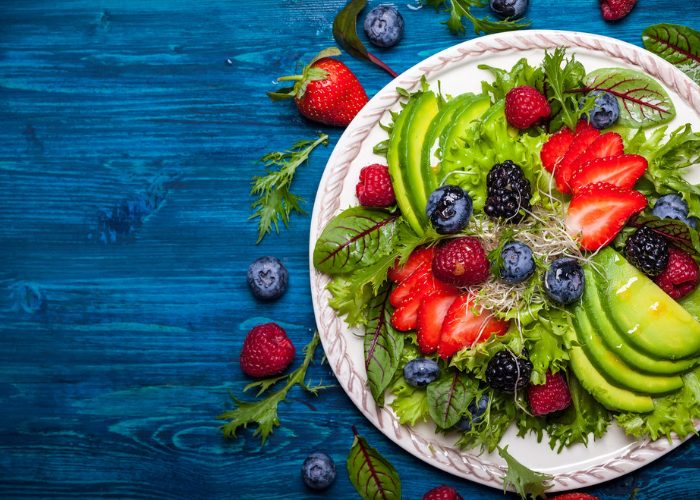
Over 100 million American adults are now suffering from either diabetes or prediabetes, according to stats from the Centers for Disease Control and Prevention.[4] Some of the symptoms of this disease include feeling constantly thirsty, having to use the bathroom frequently, sudden weight loss, and feeling very tired.[5] Diabetes can have a severely negative impact on your day-to-day life. With that in mind, it’s important that you do all you can to manage the illness and, if possible, prevent it.
One of the ways in which you can manage this illness is by adapting your diet and daily eating plan. Research from the BMJ Journals found that eating plant-based recipes can help you to manage type 2 diabetes and keep the condition in check.[6] Not only can this type of diet help you to manage your glucose levels, but it can also support your health.
What’s more, the study also found that this eating plan can also help you to improve your quality of life and wellbeing in general. If you’re looking for a way to give yourself a little boost and make a positive change in your life, making healthy changes within your diet could be the way to go. Learning some of the most healthful wholefood, plant-based diet recipes on which you can rely is a smart and savvy way to manage your wellness goals.
2. May prevent leading diseases
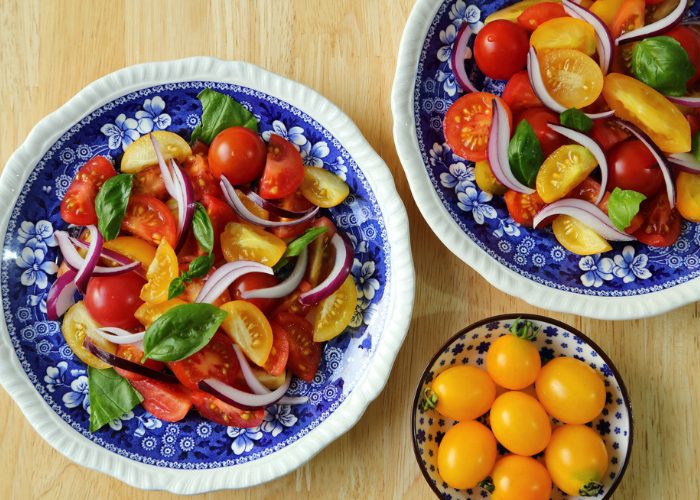
One of the main advantages of learning plant-based diet recipes and eating this diet is that it can help you manage diseases. For instance, non-communicable chronic diseases such as type 2 diabetes, heart disease, and various types of cancers are among the biggest killers in the US. The food that you choose to eat on a day-to-day basis could have a dramatic effect on your health and your chances of suffering from one of these illnesses.
Research from the Institute of Food Technologists (IFT) suggests that eating a higher level of plant-based products lower your risk of getting one of these illnesses.[7] The reason is that bioactive compounds in plant-based foods could play a role in controlling the genetic factors that lead to these health conditions. With that in mind, attempting to increase the amount of plant-based meals that you consume and decreasing the amount of animal products you eat could help to keep you healthier for longer.
3. Supports stable blood sugar levels
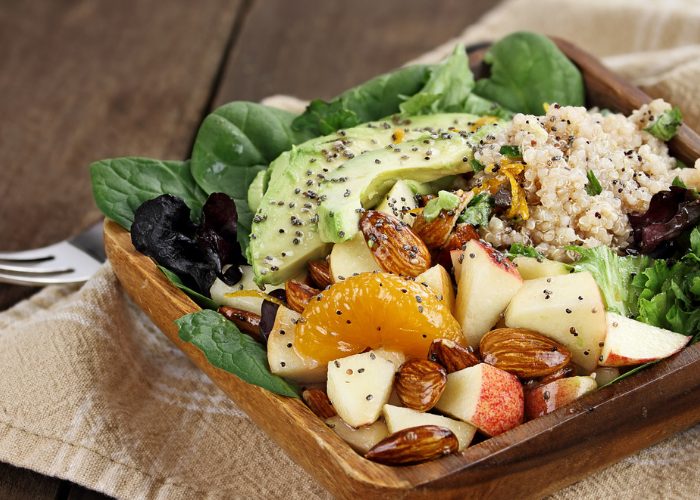
Do you have a penchant for all things sweet and sugary? If so, you might find that it plays havoc with your health and general wellness. Consuming large amounts of sugar or sweeteners can lead to high blood sugar levels overall. The technical term for this is actually hyperglycemia. The condition can lead to a higher chance of getting diagnosed with diabetes and a high risk of heart disease and stroke.[8]
Luckily, when you choose to make whole food, plant-based recipes, you don’t need to use sugar or even mainstream sweeteners. Instead, these recipes use plant-based sweeteners. As you might imagine, these alternatives are much better for you than typical high-sugar products. Research published in Wiley found that consuming plant-based sweeteners could help people to control their blood sugar levels.[9] Making this small, simple change could be all it takes to improve your health.
4. Could lower the risk of obesity
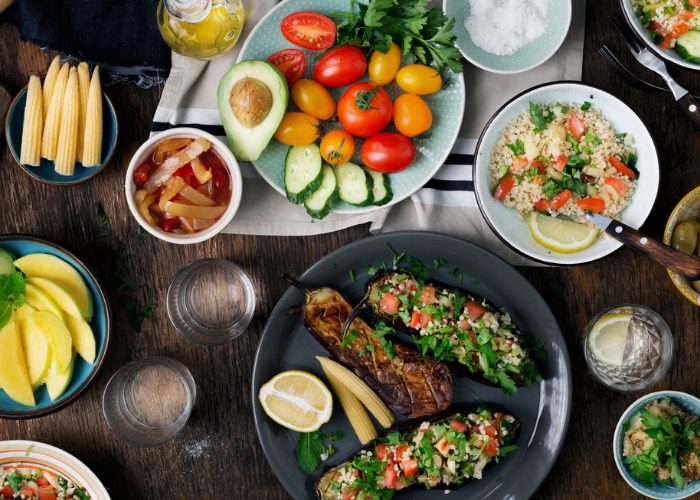
The majority of American adults are overweight or even obese. This problem is a growing one that’s sweeping the country. National statistics show that around two-thirds of adults and almost a third of children are now overweight.[10] Of course, when you’re carrying an excess of weight, it can lead to a whole range of health-related problems. From increasing your risk of heart attack to giving you a higher chance of stroke, there are many issues that this problem can lead to. Needless to say, it shouldn’t be ignored.
While leading an active lifestyle is one way in which you can target the problem, you should also consider the diet that you eat. It’s not merely about calorie counting and portion control, although these two play a role. Research from the European Association for the Study of Obesity suggests that a diet high in fruit and vegetables could help to decrease the obesity risk among the population.[11]
5. Ideal diet for sustainable weight loss
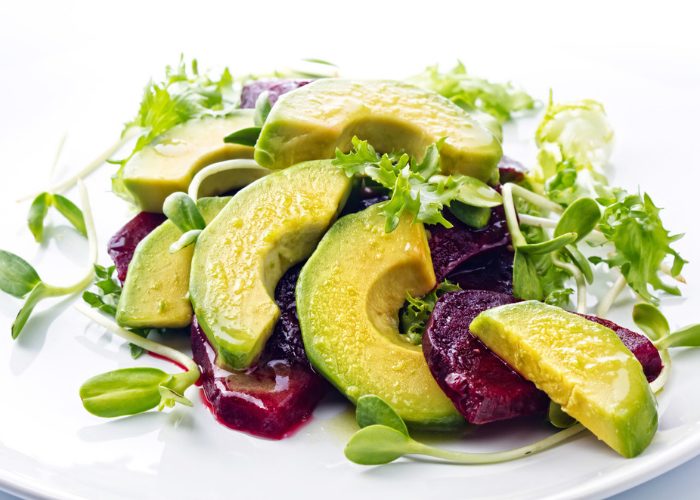
Maintaining a healthy weight can be difficult, at the best of times. If you’re currently on a weight loss journey, you might well wonder how learning some plant-based recipes can help you. This eating plan is more than a mere fad. There’s evidence to back it up. Research from the University of South Carolina has found that the vegan or plant-based is the most effective when it comes to weight loss.[12] What’s more, that result is true even when you add a range of carbohydrates to your meals.
Why does a plant-based diet help you to lose weight and stay healthy? Well, there are many reasons. For one thing, you consume fewer fats from meats and animal-products. These fats often contribute toward “empty calories”, i.e. calories that give you energy without giving you a healthy dose of vitamins and nutrients.
Plant-Based vs. Vegan: What’s the Difference?
If you’re searching for plant-based diet recipes and want to learn more about this diet, there could be one burning question on your mind. One of the things that people ask most frequently is whether veganism is the same as leading a plant-based lifestyle. These two eating plans are strikingly similar when it comes to what you can and can’t eat. Choosing to eat vegan food means avoiding any animal-based products.
Veganism
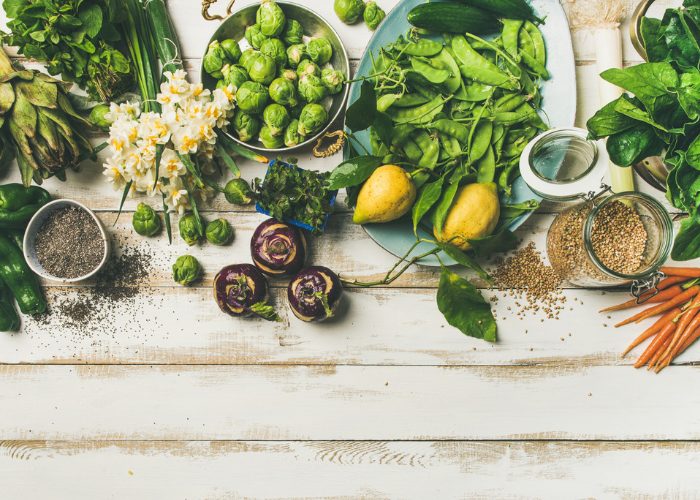
The main difference you will find between vegans and those eating a plant-based diet is their reason for doing so. Often enough, veganism is associated with a number of ethical issues, such as animal-cruelty and damage to the environment. One of the main factors for someone deciding to be vegan is that they want to prevent these problems from growing any faster than they already are.
That’s not to say that they are not concerned with their health or the benefits of the eating plan, but it may not be their primary motivator. What’s more, there are many vegan foods, such as non-dairy frozen yogurts, which are packed full of sugars and not healthy. Someone leading a vegan lifestyle may eat these while they may not typically be eaten as part of a plant-based diet.
Plant-based
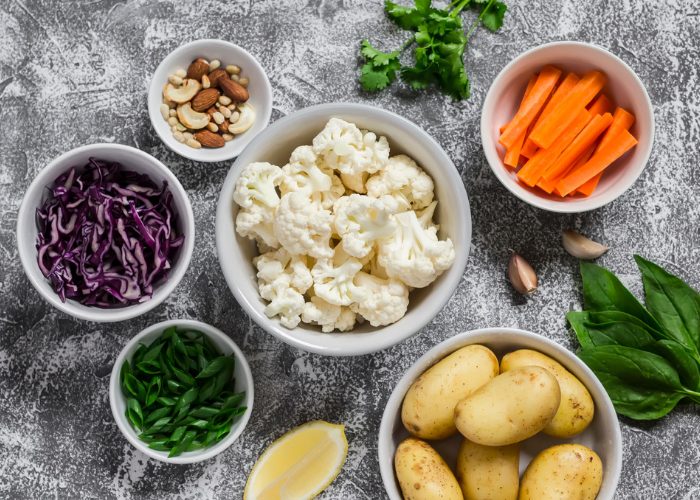
On the other hand, the plant-based lifestyle tends to be one that is more focused on health and wellness than these ethical issues. The plant-based movement is a massive trend within the wellness community. The health benefits, that we have mentioned above, are usually the driving force when it comes to people choosing to adopt this lifestyle.
While those leading a plant-based lifestyle may too be concerned with the ethical impact of their choice, it is less likely to be their main reason. Of course, people may use the two terms interchangeably and each is open to the individual’s interpretation. Regardless of your reason for wanting to consume more plant-based foods, you’re certain to reap the health-related rewards further down the line.
7 Whole Food, Plant-Based Diet Recipes for Beginners
Cooking yourself a super nutritious plant-based meal doesn’t have to be a difficult feat. Some of the most popular whole food, plant-based diet recipes will take you no longer than an hour to make. The sooner you start practicing this art, the sooner you can eat better and, let’s face it, live better too. Understanding where to start and taking the first step is perhaps the hardest part. So, here are seven breakfast, lunch, and dinner plant-based diet recipes to start with. Let’s get cooking!
Plant-Based Breakfast Recipes
They don’t call breakfast the most important meal of the day for no reason! When we’re talking about plant-based diet recipes, the most logical place to start is with breakfast. Luckily, there’s a wide variety of things that you can make for yourself. From the classic avocado on toast to a superfood smoothie that will quench your thirst, there really is something for everyone. Let’s take a look at some delectable recipe ideas to try at home.
1. Avocado on Toast
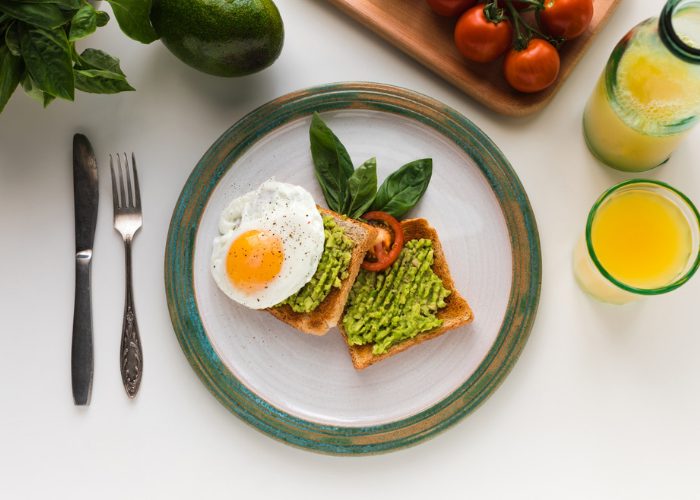
No time to spare? Some of the best plant-based breakfast recipes also happen to the simplest. If you only have 10 minutes to make your meal, this super-fast and easy recipe is certainly the way to go. Avocados are a superfood packed with fiber and actually offer you more potassium per gram than a banana.[13] As an added bonus, these fruits have a creamy and inviting texture that many people find simply irresistible. Here’s one of the quickest plant-based diet recipes that everybody should know.
Prep Time: 5-10 minutes | Serves: 1 | Calories per serving: 514 kcal
Equipment: Knife, fork/masher, and toaster
Ingredients
- 1 ripe avocado
- 1 tomato
- 2 slices whole wheat bread
- 1 tsp cayenne
- 1 tbsp chopped cilantro
- Black pepper
- 1 tbsp lemon juice
Directions
- Put the slices of bread in the toaster (or under the grill, if you’d prefer!).
- While the bread is toasting, halve the avocado and take out the stone. Scoop out the flesh of the fruit and mash it lightly. You can make it as chunky or fine as you like.
- Sprinkle the cayenne pepper onto the avocado and mash a little more. Next, add the lemon juice for a little zest.
- Take the toast out of the toaster and put it on a plate. Spread the mashed avocado onto the bread.
- Chop up the tomato into thin slices. Place on top of the avocado.
- Season with black pepper and then add the chopped cilantro to garnish your dish.
Customize your meal!
Avocado on toast is one of the most popular plant-based breakfast recipes. This one above is simply a basic rundown of how you can get it right. However, it doesn’t have to end there. There are plenty of ways in which you can customize this meal so that it suits your taste. For instance, if you’re not big on spice, you might want to leave the cayenne pepper out of the recipe. You can replace this with some garlic powder instead.
Should you wish to change your toppings on your avocado, you have free reign. Why not add some sliced cucumber or peppers rather than the tomato? You could also add some microgreens, seeds, or even protein powder into the mix, all of which will give you a seriously nutritious boost. Feel free to experiment and figure out what works!
If (somehow!) you have some unused avocado, you can use it to make an addictive avocado dressing. You can also use avocado to make your own skin and hair products. What a versatile fruit!
2. Plant-Based Superfood Smoothie
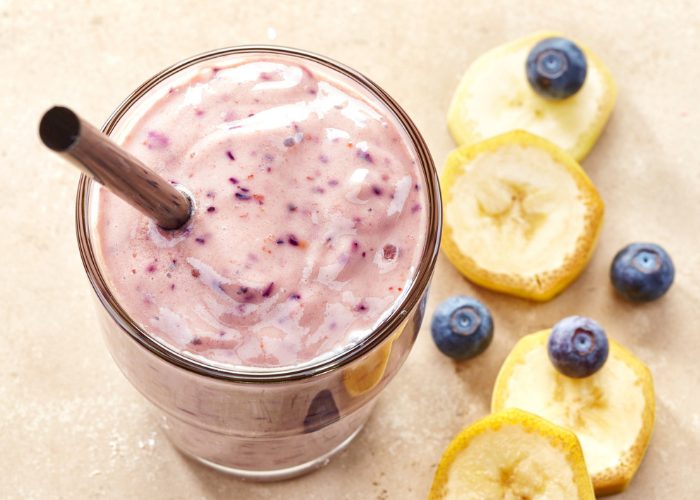
Looking for a way to boost your superfood intake? It could be one of the best ways in which you can support your health and wellness goals. One of the ways that you can get more of the good stuff is to start the day with a nutrition-packed smoothie. There are loads of plant-based diet recipes that will show you how to make the perfect smoothie. However, let’s start with something strikingly simple. Here’s a sweet and satisfying recipe you will love.
Prep Time: 5-10 minutes | Serves: 1 | Calories per serving: 317 kcal
Equipment: Knife, chopping board, and blender
Ingredients
- 1 ripe banana
- 1 tsp flaxseed
- ½ cup soya milk
- ½ cup blueberries
- 1 tsp agave syrup
- 1 tsp chia seeds
- Water
- Ice (optional)
Directions
- Peel the banana and chop it up into small chunks. Wash and rinse the blueberries.
- Add the banana chunks, soya milk, blueberries, flaxseed, chia seeds, and agave syrup to the blend. Blast the blender for a couple of minutes.
- Check the consistency of the smoothie. You might want to add some water to thin it out a little before you serve the drink. It’s completely up to you!
- Serve in a tall glass over some ice for the ultimate thirst-quenching breakfast drink!
Customize your drink!
When it comes to plant-based diet recipes, you have the option to adapt and change them to suit yourself. If you like the sound of this smoothie but have spotted an ingredient that you don’t particularly like, you can change it out. Keep the banana and the soya milk as the base of the drink and then add whatever you please to make your own recipe.
Some of the extra ingredients that you may want to consider include super healthful blackcurrants, strawberries, kiwi, and even mango. Don’t forget to write down all of your favorite plant-based diet recipes so that you can refer back to them as you please! And once you get into the swing of making smoothies, perhaps you’ll want to try making a DIY spirulina smoothie bowl.
3. Tasty Tofu Scramble
Do you have a hankering for some scrambled eggs? When you first go vegan or start following a plant-based diet, you might find that one of the things you miss the most is this breakfast treat. One of the best tips that will help you stick to your new diet is to find alternatives that satisfy your cravings. For example, one of the most flavorsome plant-based diet recipes is the humble tofu scramble. Here’s what you need to know and how to get it right when you first get started with the recipe.
Prep Time: 5-10 minutes | Serves: 2 | Calories per serving: 429 kcal
Equipment: Large bowl, fork/masher, large skillet, spatula and toaster
Ingredients
- 250g firm tofu
- 1 tbsp garlic powder
- 1 tsp chili powder
- 4 slices whole wheat bread
- 1 tbsp olive oil
- ½ tsp black pepper
- 50g raw spinach
Directions
- Put the tofu in a large bowl and use either a fork or a masher to break it up. This part of the recipe is essential. You should break the pieces down as much as possible!
- Add some oil into the large skillet and put it on a medium heat. Throw in the broken-up tofu, some garlic powder, some chili powder, and the black pepper.
- Cook the mixture for 5-10 minutes. You should use the spatula to stir the mix frequently to ensure that the food does not stick to the pan!
- Take the pan off the heat. Put the bread slices in the toaster and wait a minute for it to cook properly. Of course, you can also do this under the grill.
- Put the toast on a plate. Wash and rinse the spinach and lay it on the toast. Divide up the scrambled tofu and put it onto the toast pieces. Serve and enjoy!
Customize your meal!
Feel free to add a range of spices and herbs to the mixture to give your meal an extra splash of flavor. When it comes to serving, you can jazz it up even more. Throw some microgreens onto the tofu or add a drizzle of chili oil onto the meal. You certainly won’t regret it!
Plant-Based Lunch Recipes
When it comes to lunch time, the chances are that you want something quick and simple. There’s a real misconception when it comes to plant-based diet recipes that they are hard to master. This couldn’t be further from the truth. In fact, whipping up something that is super healthy and tastes invitingly good couldn’t be easier. With that in mind, let’s take a quick minute to look at two of the best plant-based lunch recipes.
4. Butternut Squash and Ginger Soup
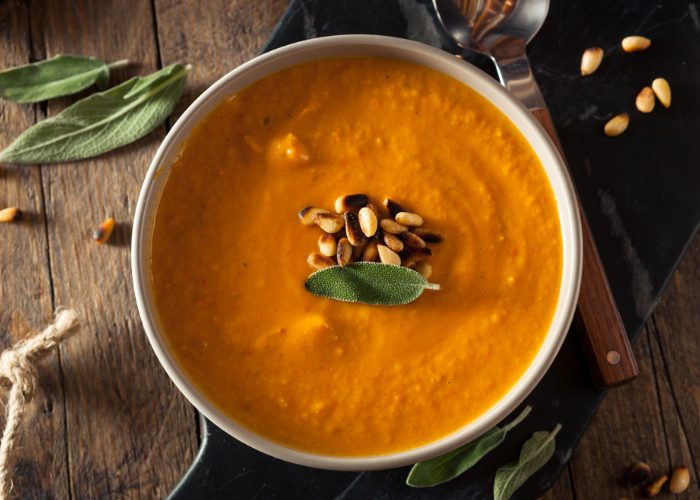
Looking for some deliciously tempting plant-based instant pot recipes? Look no further. This butternut squash and ginger soup is ideal for fall and winter. When the days are colder and you simply want something to warm you up, heating up a bowl of this stuff is the best way to make your day. As with all of the plant-based diet recipes we’re covering here, this one is low in fat and saturates.
Prep Time: 5-10 minutes | Cook Time: 30 minutes | Serves: 2 | Calories per serving: 575 kcal
Equipment: Chopping board, large knife, large pot, and handheld blender
Ingredients
- 400g chopped butternut squash
- 50g chopped carrots
- 1/2 cup vegetable stock
- 40g grated fresh ginger
- 1 t
bsp chopped parsley - Black pepper
- Water
Directions
- Put some water in a pan and put it on a medium heat. Bring the water to the boil and pop the chopped butternut squash and carrots. Simmer for 10-15 minutes or until soft.
- Drain the vegetables. Leave a little water in the pan and use the handheld blender to blast the vegetables. You can keep it as chunky or fine as you please.
- Add the vegetable stock, ginger, and black pepper to the pan. Put it back on a medium heat and cook for a further 10 minutes, stirring regularly.
- Garnish with the chopped parsley and serve.
Customize your meal!
This sweet and enticing soup is certain to get your mouth watering. If you’d like to make your plant-based lunch recipe even more decadent, drizzle some coconut milk on the top of the soup before you serve it. Doing so will kick up the sweetness to an entirely new level and make your dish look super professional.
Another fantastic curry recipe to make is vegan chickpea curry. It’s not only tasty and cost-effective, it’s a hit with kids, too!
6. Baked Sweet Potatoes and Beans

There are few meals in life quite as wholesome and satisfying as a baked potato and beans! Rather than using a standard potato, here’s one of the most interesting plant-based diet recipes that will help you change your dietary habits. Switching the potatoes for sweet potatoes and making your own bean mixture makes all the difference. Suddenly, this lazy meal becomes something that you will look forward too. Packing a whole load of flavor, a little spice, and more nutrients than you can imagine, it’s a real lunch time winner.
Cook Time: 50 minutes | Serves: 2 | Calories per serving: 369 kcal
Equipment: Two medium pans, skillet, large spoon, baking tray, chopping board, and large knife
Ingredients
- 2 large sweet potatoes
- 200g chopped Romano peppers
- 1 tbsp chili powder
- 200g drained mixed beans
- 200ml tomato passata
- 1 tbsp garlic powder
- 50g chopped scallions
- 1 tbsp chopped cilantro
- 2 tbsp olive oil
- Black pepper
Directions
- Preheat the oven to 350°F. Pierce the sweet potatoes and place them on a baking tray. Put them in the oven for around 45 minutes to cook through.
- Wait around 20 minutes. Then, while the sweet potatoes are baking, it’s time to make your filling. Start by washing and chopping up your Romano peppers. Pour some olive oil in the skillet and put it on a medium heat. Add the peppers to the pan and cook until soft.
- Put the mixed beans in the other pan and add the passata. Make sure the pan is on a medium heat.
- Add the cooked peppers, chili powder, garlic powder, and chopped cilantro into the pan of mixed beans. Leave to cook for around 10 minutes or longer, stirring regularly.
- When the sweet potatoes are cooked, take them out of the oven. Slice them in half and mash a little, if you prefer the texture to be soft.
- Pour the bean mixture over the potatoes and top with some chopped scallions. Season with black pepper before serving.
Customize your meal!
Ready to experiment a little with this wholesome meal? You can create your own plant-based diet recipes here simply by changing out a few things. For example, if you don’t particularly fancy using beans, why not try some chickpeas or lentils instead? Equally, you could find that the recipe is improved by using some paprika to give the bean mixture a hit of smoky flavor too. Since the base recipe is simple enough, there are many ways in which you can change it to suit yourself. Have a go and see what you discover!
Plant-Based Dinner Recipes
After a long, hard day at work, the last thing you want is to slave over a hot stove! Plant-based dinner recipes don’t have to be hard to create or even take hours to make. Instead, they should be relatively straightforward and easy to get your head around. Don’t fret too much over the fact that you can’t use any animal-based products in these recipes. Simply learn the following directions and you should have no problem at all!
6. Brimming Buddha Bowl
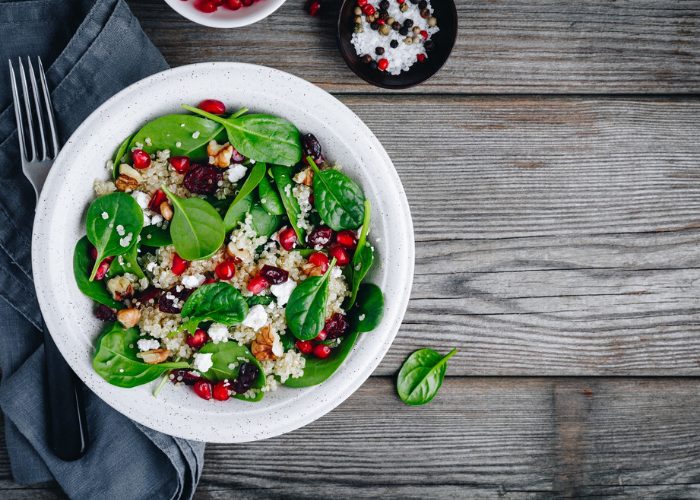
Have you heard the hype about Buddha bowls yet? These types of meals are a combination recipe. That means that you get the chance to choose from a wide variety of exciting and flavorsome ingredients. Here’s one example of a bowl that you can whip up for yourself in just 20-30 minutes. Why not try it for dinner tonight?
Prep Time: 20-30 minutes | Serves: 2 | Calories per serving: 678 kcal
Equipment: Large bowl, pan, and a large spoon
Ingredients
- 250g quinoa
- 100g raw spinach
- 100g chopped avocado
- 200g drained black beans
- 100g pomegranate seeds
- 2 tbsp lemon juice
- 1tbsp chili oil
- Water
Directions
- Pour some water in the pan and put it on medium heat. Add the quinoa into the pan and leave to cook for around 15 minutes or until fully cooked.
- Put the cooked quinoa in a large bowl, add the chopped avocado, black beans, spinach, and pomegranate seeds. Mix well.
- Drizzle the lemon juice and chili oil into the bowl. Stir some more. Split the bowl into two servings and enjoy your meal.
Customize your meal!
The main thing that you need to remember is that this meal has to have some grains (or pseudo-grains, like quinoa!), some protein (such as beans), some leafy greens, and some sauce or oil to finish. The rest is up to you! Take the time to look at some of the most enticing plant-based ingredients out there and see what works for your taste.
7. Spiced Mushroom Fajitas
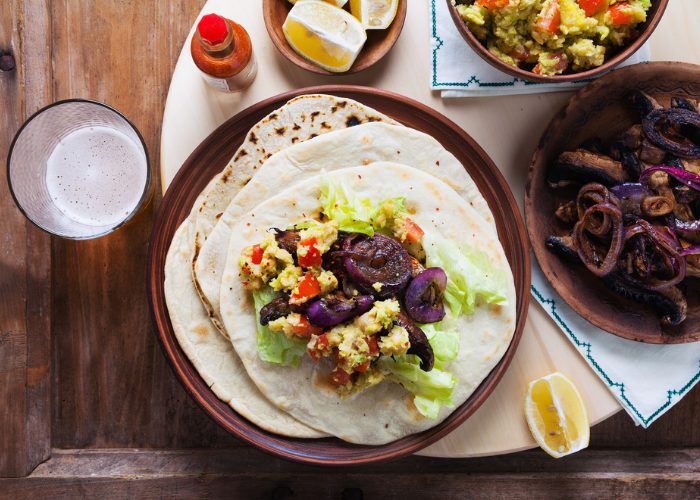
How about a Tex-Mex style meal tonight? If you love a little spice in your life, these fajitas are sure to have your stomach rumbling. Of course, the standard recipe would be made with chicken. However, this is one of the tastiest plant-based diet recipes that has been adapted from the original. The portobello mushrooms give the wraps some real substance along with an earthy flavor. Here’s what you need to do to get started.
Prep Time: 10 minutes | Cook Time: 15-20 minutes | Serves: 2 | Calories per serving: 437 kcal
Equipment: Large skillet, spatula, medium skillet, and a medium bowl
Ingredients
- 5 portobello mushrooms
- 1 sliced onion
- 1 sliced green chili
- 2 sliced red peppers
- 1 tbsp paprika
- 1 tsp agave syrup
- 6 medium whole grain tortillas
- 1 medium lime
- 1 medium iceberg lettuce
Directions
- Wash, dry, and slice the mushrooms. Make sure that you get rid of the stems as they should not be used for the recipe.
- Heat some oil in a large skillet. Add the sliced onions, peppers, and chili into the pan. Simmer for around 10 minutes or until soft.
- Add the mushrooms into the mixture and cook gently for a further 10 minutes. Stir regularly to make sure that nothing sticks!
- In a medium bowl, slice and squeeze the lime to make some juice. Remove any seeds. Add the agave syrup and paprika and stir well.
- Pour your mixture directly into the skillet over the ingredients. Simmer for a minute or two so that the flavors get a chance to infuse. Take off the heat.
- Heat the medium skillet over medium heat. Don’t put any oil in the pan. Put each tortilla into the pan and heat for 10 seconds on each side.
- Load the tortillas with the mushroom mixture and some iceberg lettuce before serving.
Customize your meal!
When you’re whipping up these plant-based diet recipes, it always helps to consider what sides may work with them. With this type of meal, you may find that a tasty five-bean salad fits the bill. Drain the beans and toss them in some chili oil before adding some chopped parsley and scallions. The side dish will give you an extra burst of protein!
3 Tips for Making Easy Plant-Based Meals
Now that you’ve got some of the easiest plant-based diet recipes under your belt, you’re almost ready to get started. The fact of the matter is that plant-based recipes aren’t all that difficult to make. When you learn the basics, everything will start to fall into place. Before you get cooking, it’s worth considering a few tips that will help you along the way.
1. Make simple plant-based swaps
If you’re used to cooking standard meals that are made with animal-based products, you might find the thought of plant-based diet recipes quite intimidating. But don’t panic! It’s all about making small and simple swaps. For example, if you’re used to using minced meat, you can switch it for soya mince. If you regularly cook with milk, why not try some plant-based milks instead? Keep things basic and you shouldn’t have a problem.
2. Focus on protein sources
One of the biggest drawbacks of a plant-based diet is that, if you don’t get it right, you could lack protein. That’s why you need to make sure that you load up on plant-based protein sources. Use healthy ingredients such as beans, legumes, leafy greens, and nuts in your day-to-day meals. Doing so will help you increase your protein intake and get what you need from the food you eat.
3. Experiment with new recipes
You don’t know whether you will like something until you actually try it. If you’re used to eating the same old meals time and time again, trying brand new plant-based diet recipes may be scary. It means stepping outside your comfort zone. However, that doesn’t mean that you shouldn’t do it. Try a range of recipes until you find some that you absolutely love.
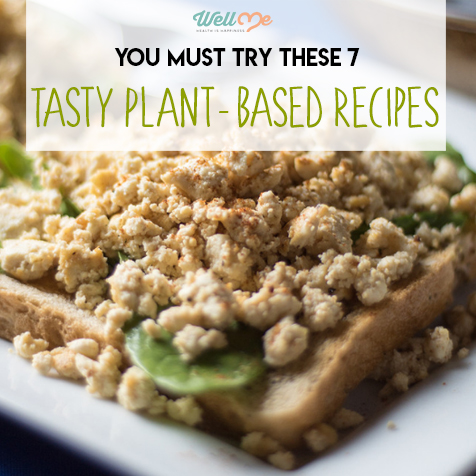
Conclusion
Leading a plant-based lifestyle is one way to boost your health and help you lead a happy life. If you’re thinking about taking the leap and trying it for yourself, there’s never been a better time to do so. With any luck, these basic plant-based diet recipes will give you the building blocks to help you get started on your journey. Try them for yourself today and find out just how easy it can be to adopt this super healthy lifestyle.
References
- [1] https://www.reportbuyer.com/product/4959853/top-trends-in-prepared-foods-2017-exploring-trends-in-meat-fish-and-seafood-pasta-noodles-and-rice-prepared-meals-savory-deli-food-soup-and-meat-substitutes.html
- [2] https://www.nature.com/articles/nature13959
- [3] https://academic.oup.com/ije/article/47/5/1603/4924399
- [4] https://www.cdc.gov/diabetes/pdfs/data/statistics/national-diabetes-statistics-report.pdf
- [5] https://www.nhs.uk/conditions/diabetes
- [6] https://drc.bmj.com/content/6/1/e000534
- [7] https://www.newswise.com/articles/plant-based-diets-can-remedy-chronic-diseases
- [8] https://www.nhs.uk/conditions/high-blood-sugar-hyperglycaemia
- [9] https://onlinelibrary.wiley.com/doi/full/10.1111/ijfs.13143
- [10] http://www.healthdata.org/news-release/vast-majority-american-adults-are-overweight-or-obese-and-weight-growing-problem-among
- [11] https://www.sciencedaily.com/releases/2017/05/170518220955.htm
- [12] https://www.newswise.com/articles/study-shows-vegan-diet-best-for-weight-loss-even-with-carbohydrate-consumption
- [13] https://nutritiondata.self.com/facts/fruits-and-fruit-juices/1846/2

